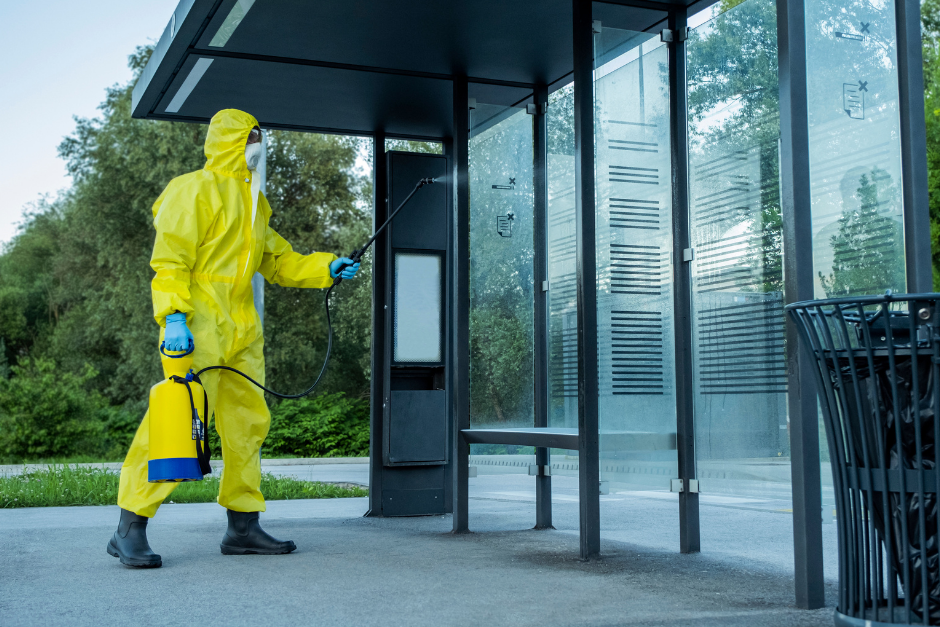Many aspects of day-to-day life have changed since the start of the pandemic, from how we commute to work, attend classes, go grocery shopping, and most importantly, the new way that we clean. There has now been a greater emphasis on cleaning and hygiene as everyone tries their best to remain healthy.
An article from Forbes even stated that the pandemic has turned many of us into germaphobes.1 As the pandemic swept the nation last year, consumers drove up demand for disinfecting wipes and sanitizers and it was only until recently that supply finally caught up.
These days, cleaning and disinfecting go hand-in-hand with health and safety. In this blog post, we will discuss the future of cleaning post-pandemic.
Higher Cleaning Standards
Throughout the pandemic, we have learned that the best ways to protect ourselves are through social distancing, strict cleaning, and practicing good hygiene habits. This includes higher cleaning standards in regards to our environments and frequent washing of our hands. These are new standards that we can, and should, continue to implement into our routines post-pandemic.
When it comes to our environments—whether it’s at work, school, or home—they should be cleaned and disinfected frequently depending on the amount of foot traffic they get. For businesses that have not yet reopened, the Centers for Disease Control and Prevention, or CDC, provides guidance on reopening procedures as well as cleaning and disinfecting facilities. Businesses must adhere to these guidelines to maintain a healthy and safe space for both employees and clients.
For a list of approved disinfectants against COVID-19, please visit the Environmental Protection Agency also known as the EPA’s List N here.
Prioritizing High-Touch Surfaces
According to the CDC, it is possible for a person to get COVID-19 by touching a surface or object that has the virus on it and then touching their own mouth, nose, or eyes. This can be caused by respiratory droplets that land on surfaces and objects. However, spread from touching surfaces is not thought to be a common way that COVID-19 spreads.2
With this in mind, having a protocol in place to clean and disinfect high-touch surfaces can still reassure your employees and clients that they are being protected against COVID-19, as well as other illnesses that come post-pandemic.
The most common high-touch surfaces indoors include:
- Tables
- Chairs
- Doorknobs
- Light switches
- Elevator buttons
- Handrails
- Countertops
- Shared electronic equipment
- Handles
- Desks
- Toilets
- Faucets
- Sinks3
For best practices, these surfaces should be cleaned every day while also frequently washing your hands.
Visible Cleaning
An even greater approach to acknowledge the health and safety of others is by cleaning visibly and documenting your process. Most businesses have janitors come in at night to perform routine cleaning for the following workday, but these days, cleaning during the day when others can see you can be extremely reassuring.
If daytime cleaning is not ideal for your business, you can still reassure others by placing documents or signs within the facility stating that the area has been cleaned and disinfected.
Improving Employee Safety and Working Conditions
Cleaning comes with many health risks so safety must continue to stay top of mind. Post-pandemic, it may be more commonplace for employers to encourage workers to stay home if they are feeling unwell, allow a hybrid work schedule for those who are immunocompromised, and invest in proper safety training and PPE.
According to Nilfisk, a well-known supplier of professional cleaning equipment, two trends regarding employee safety and working conditions include autonomous cleaning solutions and increased efforts to make cleaning a more attractive job prospect.
Autonomous cleaning machines can take care of simple tasks such as floor cleaning so that employees can more carefully utilize their efforts on difficult tasks. As for making cleaning a more attractive job prospect, employers should look into higher wages, training and opportunities for professional development, more paid leave, health insurance, and retirement savings programs.4
Turnover rates are high in the cleaning industry, averaging about 200% and even reaching 400% annually.5 By prioritizing and investing in employee safety and working conditions, you help to decrease turnover rates, gain the trust of your employees, and ultimately build a stronger team.
What Can We Expect Post-Pandemic
We can only hope that frequent cleaning and disinfecting, good hygiene habits, and keeping respectful distances from others are here to stay. With warmer weather approaching, capacity limits will continue to increase but we should always be mindful of our health and safety.
Contact Us
Commercial Cleaning Corporation can help your business maintain a healthy and safe environment from now until well after the pandemic ends. Is your business not open yet? We can help you with that too! Our services include electrostatic disinfection, janitorial work, day porters, and more. Trust the professionals that have been in the industry for over 90 years.
Click here now to fill out our contact form and schedule a free walkthrough.
Sources
- The Pandemic Has Made Us Germaphobes, Data Shows. Here’s How Cleaning Businesses Are Stepping In. (forbes.com)
- How Coronavirus Spreads | CDC
- Coronavirus Disease 2019 (COVID-19) – Checklist for Teachers, Parents, and Administrators (cdc.gov)
- Nilfisk: Cleaning in the COVID-19 Era
- 4m_issue_3_whitepaper.pdf (4-m.com)

